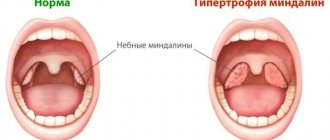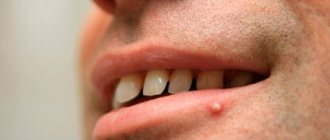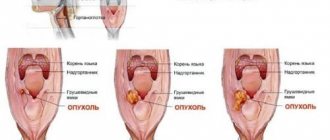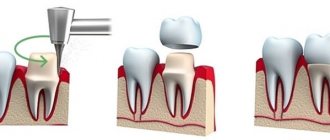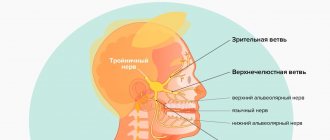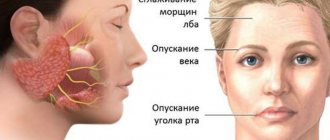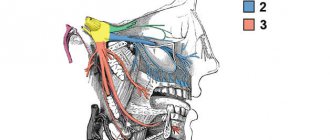- Acupuncture Quickly relieves inflammation and pain, has an anti-edematous and anti-ischemic effect. The introduction of hair-thin needles reliably eliminates pain attacks.
- Pharmacopuncture Used in combination with acupuncture. This procedure involves the introduction of microdoses of homeopathic medicines, which help achieve the fastest possible analgesic and anti-inflammatory effect.
- Acupressure Improves local blood circulation, eliminates spasms of facial muscles, relieves emotional and muscle tension, improves metabolic processes.
- Moxotherapy on bioactive points of the body has a general strengthening effect, improves immunity, and activates the body's protective and regenerative processes.
- Herbal medicine Ideally complements the effects of procedures and consolidates their results, has a sedative effect, improves blood supply to nerve tissue.
Trigeminal neuralgia in Eastern medicine
With regard to trigeminal neuralgia, as with all other diseases, oriental medicine takes a comprehensive approach.
If Western medicine does not go beyond the immediate causes of nerve damage - compression by edema, hypothermia, viral infection, unsuccessful dental treatment or other obvious factors, then Eastern medicine finds and eliminates the root cause of the disease.
Trigeminal neuralgia, like all neuralgia and neuritis, refers to disorders of the Rlung (Wind) regulatory system. This system is responsible for mental activity, psycho-emotional state and nervous regulation of the body. The main reasons why Wind diseases occur are stress, negative emotions, hypothermia, lack of nutrition, sleep, and overwork. It would seem, what is the connection between the trigeminal nerve and the emotional state? However, it exists, and medical science confirms it.
According to official statistics, in 20% of cases, trigeminal neuralgia occurs against a background of negative emotions. In reality, this percentage is much higher if we take into account the long-term consequences of nervous stress, mental trauma, and emotional overload.
Neuralgia is often accompanied by depression and neuroses. Combined with strong cold winds and hypothermia of the face, this is likely to produce symptoms of trigeminal neuralgia.
The question arises: is it enough to simply relieve pain, reduce swelling of soft tissues, and restore normal blood supply to the nerve in order to consider the problem solved? Or does the treatment of trigeminal neuralgia require the same comprehensive approach as the treatment of nervous disorders? Eastern medicine answers this question unequivocally: without restoring the balance of the body, treatment of trigeminal neuralgia cannot be truly effective, successful, and its results cannot be long-lasting and lasting. Only by eliminating all the causes of the disease can the problem of neuralgia be solved so that the patient forgets about it for a long time or forever.
That is why treatment of trigeminal neuralgia at the ITVM clinic includes not only the use of medical procedures - acupuncture, acupressure and others, but also a course of herbal medicine. Tibetan herbal remedies used for neuralgia normalize the psycho-emotional state, increase resistance to stress, improve sleep, help overcome depression, neurosis and have a general strengthening effect. In addition, “ITVM” performs acupuncture on the bioactive points of the body’s meridians in order to restore normal circulation of vital energy and thereby eliminate its overexpenditure, which leads to exhaustion of the nervous system.
Atypical symptoms of trigeminal neuralgia
Trigeminal neuralgia usually manifests itself as an acute attack of pain affecting the right or left (less often) half of the face.
There are also atypical signs of this disease. In particular, trigeminal neuralgia can manifest as pain in the base of the tongue, throat, ear, or sore throat from cold or sour foods. This is the so-called pharyngeal form of trigeminal neuralgia.
If the cause of neuralgia is a herpes virus infection, the symptoms may also be atypical - headache and itching, the appearance of white areas on the skin. The pain may not be paroxysmal, but constant, moderate in nature. In general, any form of the disease in which pain does not occur in attacks, but is constant (pulsating, aching) and accompanied by a burning sensation, is called trigeminal neuralgia type 2, or atypical neuralgia.
When diagnosing the disease, trigeminal neuralgia should be differentiated from symptoms of multiple sclerosis.
With multiple sclerosis, short-term painful attacks covering half the face are also possible, but other symptoms are also present - severe sweating of the forehead, lacrimation, tremors (shaking hands), unilateral blurred vision, dizziness, poor coordination of movements and a number of other neurological symptoms.
What can cause an attack of trigeminal neuralgia?
This could be a light touch, a breeze, washing your face, talking, eating, brushing your teeth, shaving your face. Sometimes the so-called “staircase syndrome” occurs. It lies in the fact that if the patient stumbles while walking up steps or simply on an uneven surface, he immediately has an attack.
Unfortunately, trigeminal neuralgia cannot be completely cured. This is a chronic disease that consists of alternating attacks and remission. The main goal of treatment is to make periods of remission as long as possible.
Treatment of trigeminal neuralgia at home
To relieve pain from trigeminal neuralgia, traditional medicine uses warming - compresses of hot salt or heated buckwheat, a hot hard-boiled egg. Such products must be used with great caution, since exposure to heat can aggravate the inflammatory process. There is also an opposite folk method of treatment - “freezing” the affected area with a piece of ice.
Another folk remedy is fir oil, which is rubbed into the affected half of the face and has a warming effect. In the same way, lavender oil, star balm, garlic oil, radish juice, alcohol tincture of propolis, grated horseradish, tincture of birch buds with vodka and other external remedies are used.
To relieve the symptoms of trigeminal neuralgia, folk medicine uses herbal preparations with calming, sedative and anticonvulsant effects from mint, chamomile, thyme, yarrow and other medicinal herbs.
It should be emphasized that with all the variety of traditional medicine recipes, they only help relieve pain, but are not a means of treating trigeminal neuralgia. They can be used to tide you over for a while before a visit to the doctor, but not as a substitute for such a visit.
Trigeminal neuralgia, causes and treatment methods
Those who suffer from trigeminal neuralgia do not need to imagine this disease. Severe attacks of pain on the face, reminiscent of an electric shock, occur during the most ordinary activities. The patient is afraid to wash his face, talk, eat, brush his teeth, or shave. Even the movement of air or a simple touch is accompanied by pain.
The exact cause of the disease is unknown, although there are several theories to explain its origin. It is believed that neuralgia can occur as a result of compression of the nerve root by passing nearby blood vessels or as a complication of inflammatory diseases of the teeth and gums.
The trigeminal nerve originates in the cranial cavity, in the Gasserian ganglion. A sensitive nerve root departs from this node, which almost immediately divides into 3 branches. They come to the surface through natural openings in the bones of the skull and provide the face with sensitivity to touch, pain, heat and cold. The first branch innervates the forehead, eyebrow and eye, the second branch is responsible for the sensitivity of the cheek, nose, upper lip, upper jaw and palate, the third branch covers the chin, lower lip, lower jaw, tongue and temple. Typically, attacks of pain begin from zones lying in the area of innervation of branches II and III.
To relieve pain, patients are prescribed finlepsin (carbamazepine), but with long-term use, the effectiveness decreases and higher and higher doses are required. But this medicine is quite heavy and can have serious side effects on the body. In some cases, physical therapy helps, but the effect of conservative treatment is often insignificant, and in 30% of cases it is not observed at all.
If pills and physiotherapy do not help, you have to choose a surgical treatment method. There are many operations aimed at eliminating pain from trigeminal neuralgia, but all of them can be divided into three types:
1. Blockades where the branch reaches the surface. Usually produced by alcoholizing the nerve with a mixture of alcohol and novocaine. The pain goes away quickly, but may return after a while. Repeated nerve blocks are usually less effective.
2. Destruction of the sensitive root of the trigeminal nerve in the cranial cavity. In this type of operation, a long puncture needle is brought to the nerve root through the cheek and through a natural opening in the skull bone (see figure). The nerve is then interrupted using some agent. Several decades ago, injection of boiling water, alcohol or glycerin through a needle was widely used. Now high-frequency electromagnetic waves or lasers are used. Laser radiation delivered to the sensitive root through a light guide acts most accurately, which ensures good surgical results and the absence of side effects. The operation is performed under local anesthesia, which allows this method to be used in elderly patients and in the presence of concomitant diseases.
3. Microvascular decompression of the trigeminal nerve is used only if the cause of neuralgia is compression of the nerve by surrounding blood vessels. This is a major neurosurgical operation that is performed under general anesthesia with intracranial access. During the operation, a gasket is placed between the vessels and the nerve root to prevent contact between them and the impact of the vessel on the root. However, neurovascular conflict is not always the cause of neuralgia. In addition, this operation is contraindicated for patients with concomitant diseases and elderly patients. This method is more traumatic for the patient and may be accompanied by complications.
Prevention of trigeminal neuralgia
Strengthening the immune system is often recommended as a means of preventing trigeminal neuralgia. However, this advice is too general, and in general is not very suitable for this neuralgia, which is almost never directly associated with reduced immunity. Of course, there is nothing wrong with strengthening your immune system, but your main focus should be elsewhere. From the point of view of Eastern medicine, trigeminal neuralgia is a disease of the Wind.
For the prevention of such diseases, the main importance is the quality of sleep, proper work and rest schedule, good nutrition, avoidance of stress and overwork.
This means that the diet must be complete, contain a sufficient amount of vitamins B, C, A, D and E, fats (including not only vegetable, but also animal fats, for example, butter, and even better, ghee). It is necessary to get enough rest, get enough sleep, monitor your mood, avoid negative emotions and depression. And of course, you need to avoid cold winds and drafts.
For symptoms of neurosis and other nervous disorders, you should undergo a preventive course of herbal medicine. If there are serious signs of a nervous system disorder, it is better to immediately undergo a full treatment course of acupuncture, massage, herbal remedies and other methods of oriental medicine. This will help avoid not only trigeminal neuralgia, but also other neurogenic pain syndromes.
What is the cause of trigeminal neuralgia?
Neurologists believe that it consists of compression of the trigeminal nerve root by a nearby vessel. The causes of compression may be:
- tumors
- adhesions after injuries, infections,
- dilatation of convoluted cerebellar arteries, veins,
- aneurysm of the basilar artery.
The development of the disease can be caused by various vascular, endocrine-metabolic, allergic disorders, as well as psychogenic factors.

